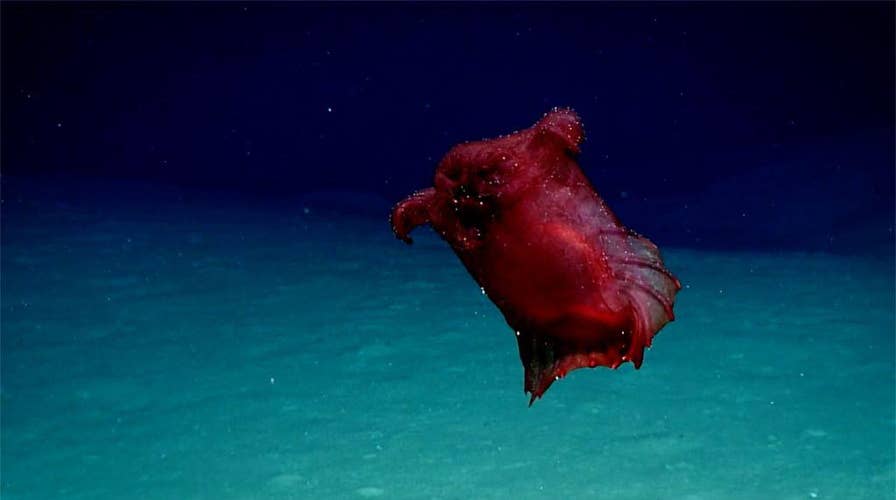'Headless chicken monster’ discovered in the Southern Ocean
A 'headless chicken monster,' or sea cucumber, has been filmed in the Southern Ocean for the first time.
The ocean is a place where much is left to be discovered.
Of the thousands of fish species known to make up the deep blue sea, many are beautiful, while others are not as nice to behold.
Many of the ocean's creepiest creatures live deep below the surface, yet just a picture alone can be enough to give you the shivers.
CREEPY DEEP SEA LANCETFISH MYSTERIOUSLY WASHES UP ON OREGON BEACHES
Here is a roundup of a few of the ocean's most frightening creatures that have been discovered thus far by researchers.
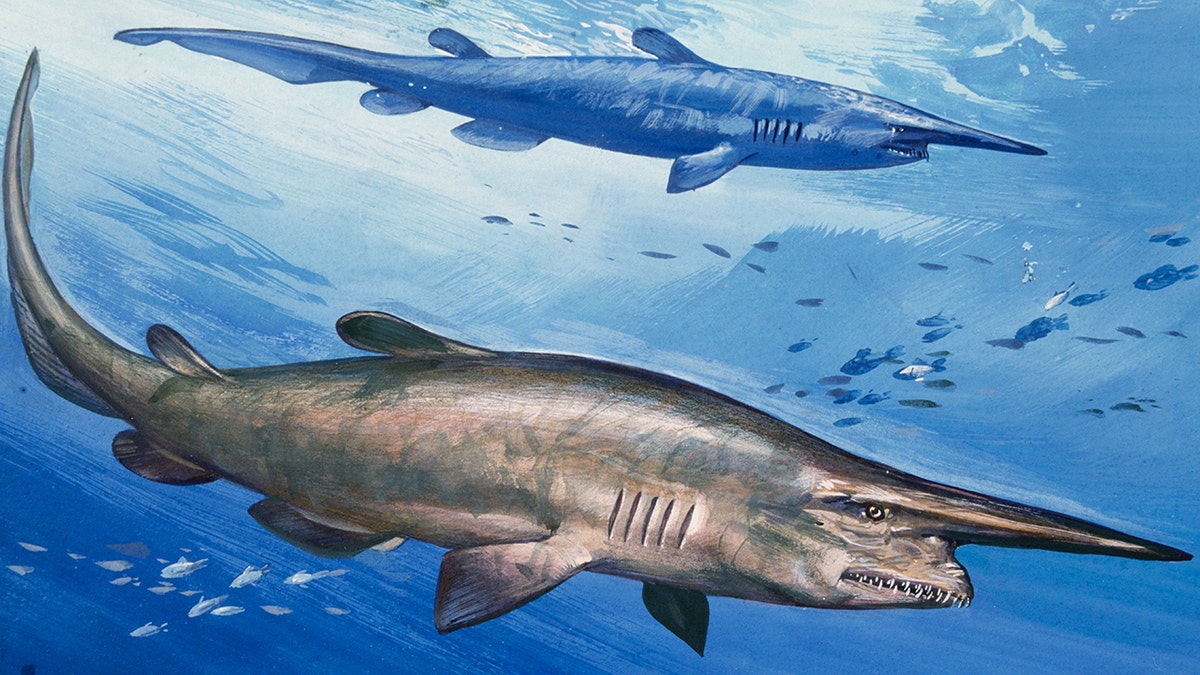
The goblin shark has a long nose and sharp, jagged teeth. (DeAgostini/Getty Images)
- Sea pig or scotoplane
- Goblin shark or mitsukurina owstoni
- Stonefish or synanceia
- Giant isopod or Bathynomus giganteus
- Sloane's viperish or chauliodus sloani
- Anglerfish or lophiiformes
- Frilled shark or chlamydoselachus sanguineus
- Vampire squid or vampyroteuthis infernalis
- Black swallower or chiasmodon niger
- Stargazer or uranoscopidae
1. Sea pig or scotoplane
Sea pigs can be found on the ocean floor; these crawl on little legs looking through the muddy seafloor for something to eat.
The sea pig's scientific name is the scotoplane. The creature is quite tiny, ranging from just 1.5 to 6 inches in length.
Researchers have seen these small creatures in the hundreds moving about the sea floor.
2. Goblin shark or mitsukurina owstoni
The goblin shark, or mitsukurina owstoni, looks very prehistoric.
This shark can be found deep in the ocean with its extremely long nose, small eyes and jagged teeth.
This rare species normally has a pinkish or purplish gray color.
3. Stonefish or synanceia
If you take a quick glance at this photo, you may think you are looking at a reef in the ocean, but give it a closer look, and you will see the stonefish take shape.
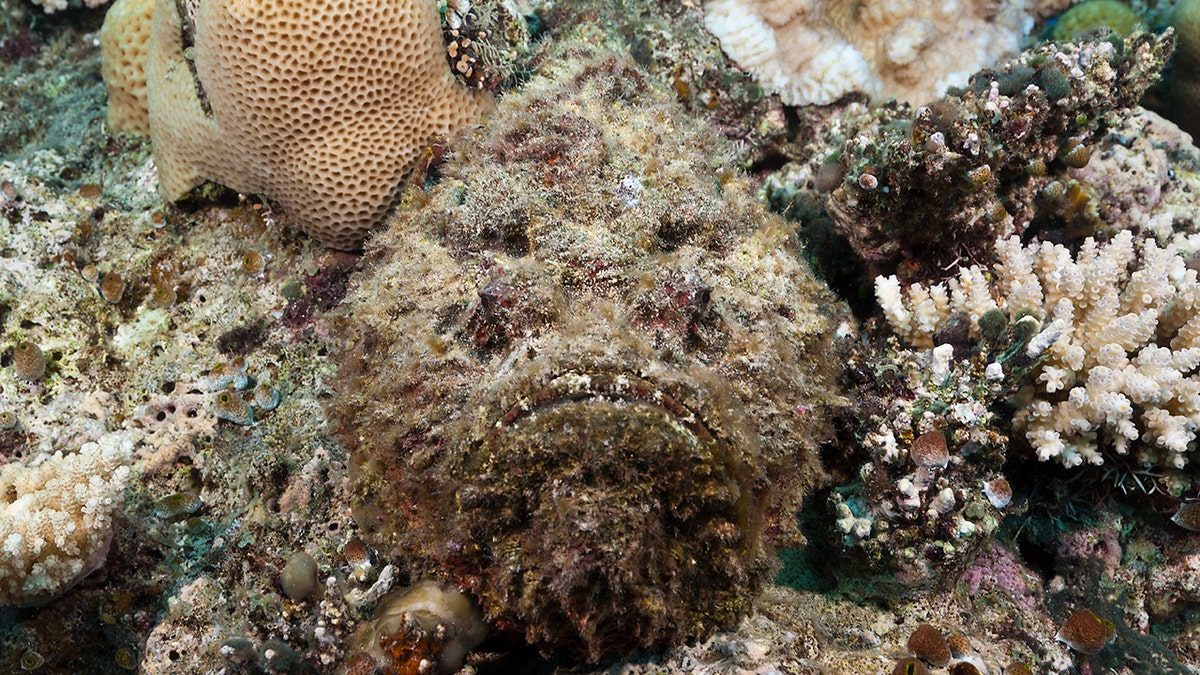
The stonefish is very good at camouflage and is able to attack its prey by hiding silently. (Reinhard Dirscherl\ullstein bild via Getty Images)
The stonefish, or synanceia, is a master of camouflage and often hides itself in coral and rocky reefs.
This technique helps it sneak up on prey without moving much at all. The stonefish remains very still in its position and then ambushes its prey when it swims close.
HUGE 420-MILLION-YEAR-OLD FISH SPECIES REDISCOVERD IN INDIAN OCEAN
This fish is the most venomous in the world and can be extremely dangerous to humans.
It has 13 spines that release venom that can kill a human in mere hours.
4. Giant isopod or Bathynomus giganteus
You may have never seen a giant isopod, but you have probably seen a roly-poly, which will give you a good idea of what the ocean creature looks like, since the two are related.
The bathynomus giganteus has seven pairs of legs and moves slow deep in the ocean.
It snacks on falling debris and can grow to be up to 16 inches.
5. Sloane's viperish or chauliodus sloani
The fang-like teeth on a Sloane's viperfish make the creature rather terrifying.
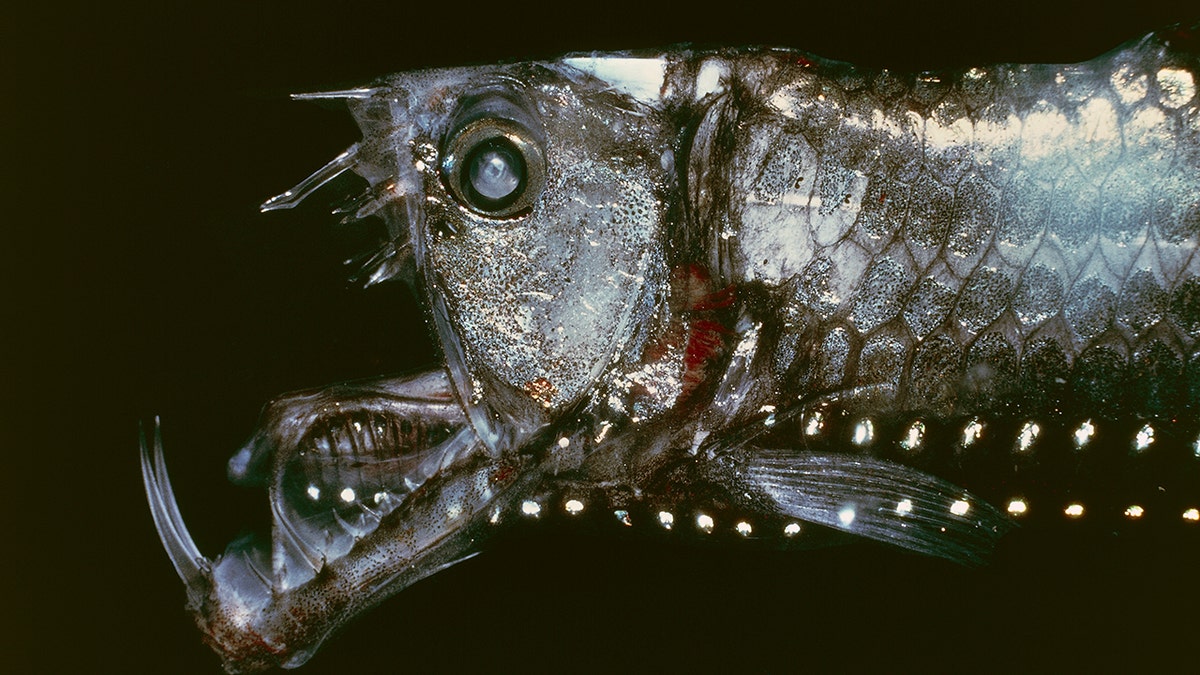
The scientific name of Sloane's viperfish is chauliodus sloani. (DeAgostini/Getty Images)
The chauliodus sloani, if using its scientific name, has teeth that are more than half the size of its whole head.
This creature is typically found in a darker silver/blue color.
6. Anglerfish or lophiiformes
The anglerfish is actually a real creature of the deep, not just an animated monster from "Finding Nemo."
In the movie, Marlin and Dory are drawn in by the anglerfish's glow at the end of the rod coming out of its head before they are chased through the ocean by the scary fish.
This depiction is pretty similar to what an anglerfish does in the ocean.
SHARKS: 12 INTERESTING FACTS ABOUT THE MARINE FISH
The anglerfish, or lophiiformes, is usually a blackish color and can grow to be around 4 feet.
They do have a rod that emerges from their head, kind of like a fishing pole. The end of it glows, which draws in prey.
7. Frilled shark or chlamydoselachus sanguineus
The frilled shark, or chlamydoselachus sanguineus, has 25 rows and 300 individual razor sharp teeth.
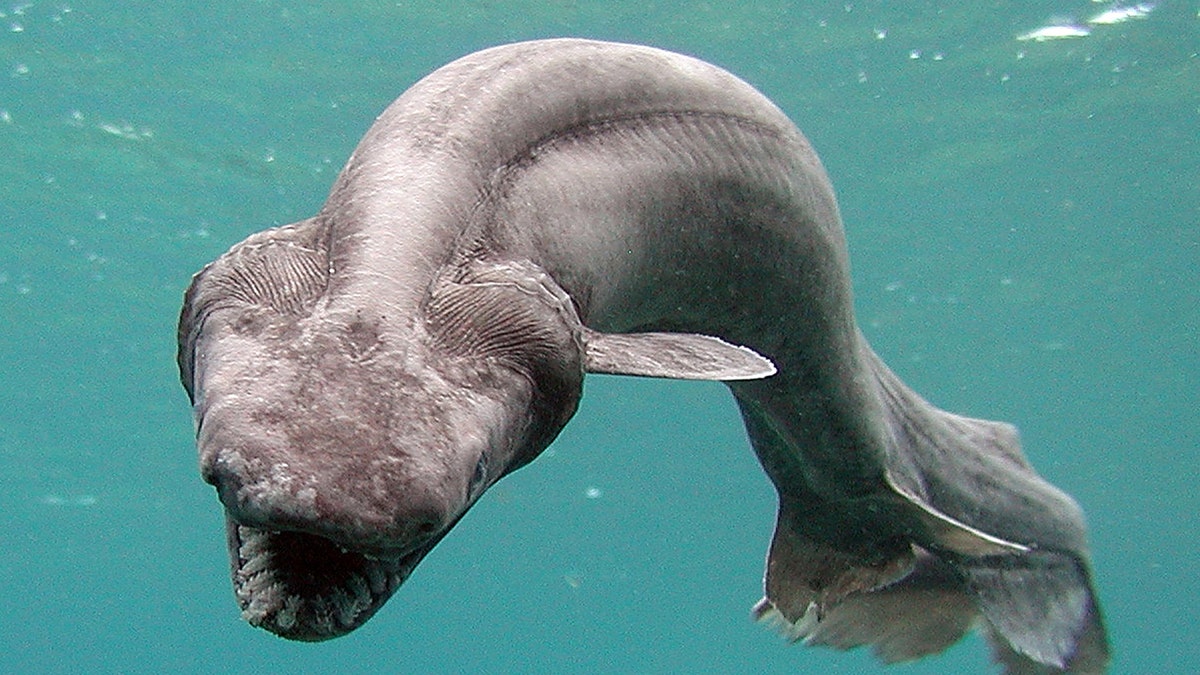
There are 300 individual teeth in the mouth of the frilled shark. (Awashima Marine Park/Getty Images)
They have eel-like qualities and can grow close to 7 feet in length.
8. Vampire squid or vampyroteuthis infernalis
The vampire squid gets its name from the low light, low oxygen environment it lives in deep in the ocean.
CLICK HERE TO SIGN UP FOR OUR LIFESTYLE NEWSLETTER
The squid, or vampyroteuthis infernalis, has eight arms, huge eyes and rows of spine on each of its tentacles.
9. Black swallower or chiasmodon niger
The black swallower, or chiasmodon niger, has a very expandable stomach, allowing it to eat fish that are 10 times its original size.
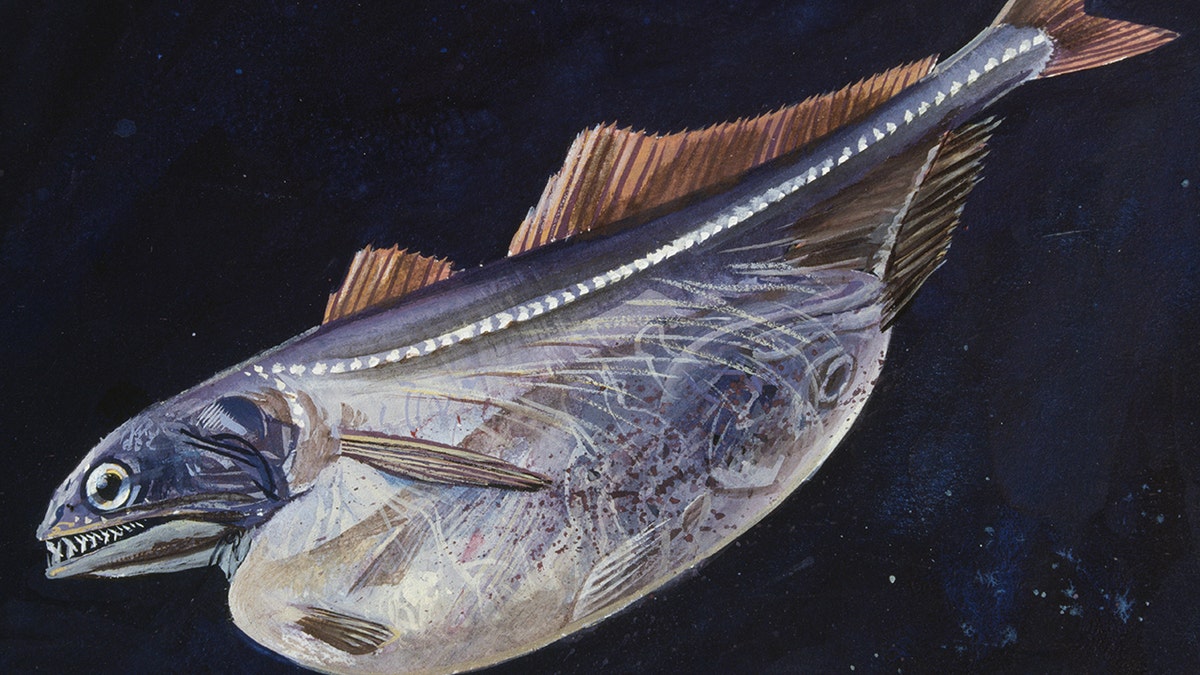
The black swallower can eat fish a lot bigger than it is with its expanding stomach. (DeAgostini/Getty Images)
It typically comes in a brownish, black color and is able to eat fish a lot bigger than itself.
10. Stargazer or uranoscopidae
The stargazer lies just beneath the sand.
CLICK HERE TO GET THE FOX NEWS APP
The fish, also known by its scientific name uranoscopidae, has sharp teeth, venomous spines and large eyes.
